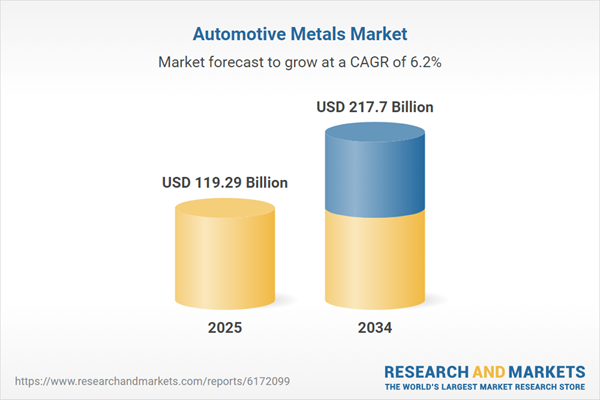Heightened Demand for Heavy Commercial Vehicles to Aid the Global Automotive Metals Industry
Based on end use, the heavy commercial vehicles segment is predicted to hold a significant market share in the automotive metals industry. This growth can be attributed to the increased investments in the infrastructure development across the world. This is leading to the heightened demand for heavy commercial vehicles worldwide, which is anticipated to propel the market growth. Furthermore, the increased industrialisation is also projected to aid the market growth in the coming years.The Asia-Pacific to Provide Lucrative Growth Opportunities for the Global Automotive Metals Industry Growth
The Asia-Pacific is estimated to hold a substantial share of the automotive metals industry in the forecast period. This growth can be attributed to the presence of the leading market players in the region. In addition, the rising government investments supporting infrastructure development activities in the region are also predicted to drive the demand for heavy duty vehicles for construction applications. The rising population is augmenting the demand for residential, commercial, and industrial infrastructure, thereby, bolstering the market growth in the forecast period.
Automotive Metals: Market Segmentation
Automotive metals are metals, such as steel, aluminium, and magnesium, that are commonly used in the manufacturing of automobiles. These metals are combined with additional elements to produce alloys that are moulded to form different parts of the vehicle. Different metals offer different advantages, for instance, steel aids in the process of absorbing impact energy in a crash situation. Aluminium and magnesium, on the other hand, helps to reduce the overall weight of the car’s body, thus, reducing the fuel requirement.By product, the market is divided into:
- Aluminium
- Steel
- Magnesium
- Others
On the basis of application, the market can be segmented into:
- Body Structure
- Power Train
- Suspension
- Others
On the basis of end use, the market can be distributed into:
- Passenger Cars
- Light Commercial Vehicles
- Heavy Commercial Vehicles
The regional markets for the product include:
- North America
- Europe
- Asia-Pacific
- Latin America
- Middle East and Africa
The automotive metals industry is being driven by the growing automotive sector and the increasing demand for vehicles. The growing global population, rising disposable incomes, and the improving living standards are leading to a rise in demand for transportation and passenger cars, thus, aiding the industry growth. In addition, the rising demand for heavy duty vehicles and machinery in the forecast period, which are essential in the construction industry, has been catalysing the market growth. Furthermore, the rapid technological advancements and the need to create lightweight vehicles to reduce energy consumption are also expected to aid the industry growth in the forecast period.
Key Industry Players in the Global Automotive Metals Market
The report gives a detailed analysis of the following key players in the global automotive metals market, covering their competitive landscape, capacity, and latest developments like mergers, acquisitions, and investments, expansions of capacity, and plant turnarounds:- ArcelorMittal
- POSCO INTERNATIONAL Corporation
- voestalpine Metal Forming GmbH
- Tata Steel Limited
- United States Steel Corporation
- thyssenkrupp AG
- Others
Table of Contents
Companies Mentioned
The key companies featured in this Automotive Metals market report include:- ArcelorMittal
- POSCO INTERNATIONAL Corporation
- voestalpine Metal Forming GmbH
- Tata Steel Limited
- United States Steel Corporation
- thyssenkrupp AG
Table Information
| Report Attribute | Details |
|---|---|
| No. of Pages | 156 |
| Published | August 2025 |
| Forecast Period | 2025 - 2034 |
| Estimated Market Value ( USD | $ 119.29 Billion |
| Forecasted Market Value ( USD | $ 217.7 Billion |
| Compound Annual Growth Rate | 6.2% |
| Regions Covered | Global |
| No. of Companies Mentioned | 7 |









